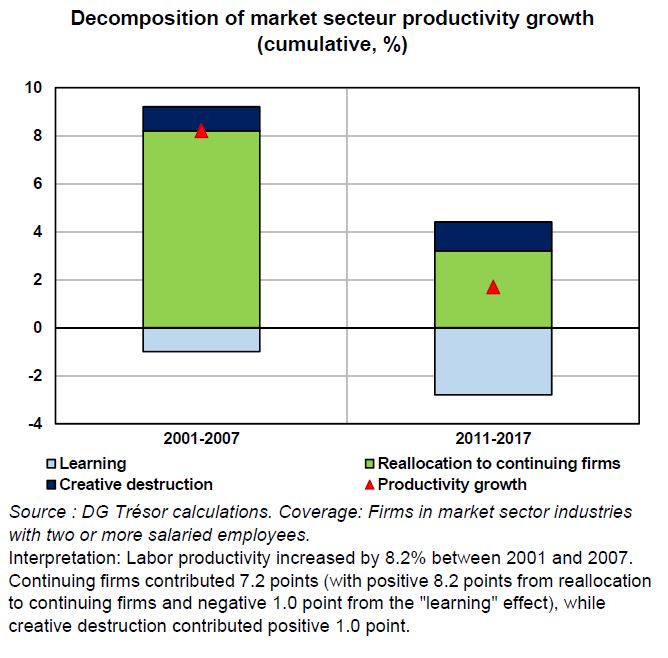The contribution of creative destruction to productivity growth in France
Job reallocations between companies contribute significantly to productivity gains in France. These reallocations take place both between permanent companies and through the phenomenon of creative destruction, i.e. the entry and exit of companies. Whereas, until the 2008 crisis, productivity gains were mainly due to permanent companies, creative destruction contributed much more to productivity gains after 2011.
Job reallocation between firms, both within an industry and between industries, contributes to changes in productivity. While quantifying the contribution is challenging and a topic of continuing debate, empirical studies indicate that intra-industry reallocations, i.e., those between firms in the same sector, have a positive effect on productivity.
Data for France indicates that reallocations made a strong positive contribution to productivity growth during a period of steady economic growth (2001-2007), and also considerably dampened the decline in productivity during the financial crisis (2008-2011). This reallocation takes two forms: the redistribution of jobs between firms that operate throughout the period, and Schumpeterian creative destruction, i.e. the entry and exit of firms.
Changes in productivity can be decomposed into three components: productivity growth of continuing firms with no change in employment (firm-specific internal performance, here called the "learning" effect); reallocation of employment between continuing firms with no change in productivity ("reallocation to continuing firms"); and the net entry effect ("creative destruction").
Recent microeconomic data provides an opportunity to decompose productivity growth and to compare the relative contributions of creative destruction in two periods, 2001-2007 and 2011-2017. Continuing firms made the largest contribution in the period prior to the 2008 financial crisis, while Schumpeterian creative destruction made a larger contribution after 2011.
